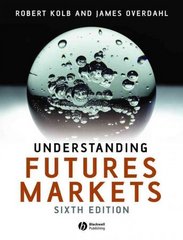3. An accident has occurred, causing $10,000 in harm to the victim. The amount of harm done is undisputed and easy to prove; punitive damages are not applicable, so any damage award would be for exactly $10,000. This type of accident is governed by strict liability, so the injurer is legally responsible, but it may be difficult to prove in court that he caused the harm. The victim can hire a lawyer for $3,000 and go to trial, in which case he would have a 40% chance of winning. He could also hire an expert witness to testify. This would ensure victory at trial, but would cost an additional $10,000, for a total of $13,000. Going to trial costs the defendant (injurer) $5,000, regardless of whether the plaintiff (victim) hires an expert witness. Assume that neither party pays any legal expenses if an out-of-court settlement is reached. First, consider the usual American rule where each party pays its own legal fees. (a) If the case goes to trial, will the plaintiff hire an expert witness or not? (b) Given your answer to (a), calculate i. Each partys threat point during pre-trial negotiations (which is its noncoop- erative payoff if the case goes to trial) ii. The gains from cooperation if a pre-trial settlement is reached iii. The settlement that would occur if the two parties agreed to divide the gains from cooperation evenly Consider the usual British rule where the losing party pays both sides' legal fees (in- cluding the cost of the expert witness, if he was hired). (c) If the case goes to trial, will the plaintiff hire an expert witness? (d) Given your answer to (c), answer the same three questions as before: calculate i. Each partys threat point ii. The gains from cooperation iii. The settlement that would occur if gains from cooperation were divided evenly 3. An accident has occurred, causing $10,000 in harm to the victim. The amount of harm done is undisputed and easy to prove; punitive damages are not applicable, so any damage award would be for exactly $10,000. This type of accident is governed by strict liability, so the injurer is legally responsible, but it may be difficult to prove in court that he caused the harm. The victim can hire a lawyer for $3,000 and go to trial, in which case he would have a 40% chance of winning. He could also hire an expert witness to testify. This would ensure victory at trial, but would cost an additional $10,000, for a total of $13,000. Going to trial costs the defendant (injurer) $5,000, regardless of whether the plaintiff (victim) hires an expert witness. Assume that neither party pays any legal expenses if an out-of-court settlement is reached. First, consider the usual American rule where each party pays its own legal fees. (a) If the case goes to trial, will the plaintiff hire an expert witness or not? (b) Given your answer to (a), calculate i. Each partys threat point during pre-trial negotiations (which is its noncoop- erative payoff if the case goes to trial) ii. The gains from cooperation if a pre-trial settlement is reached iii. The settlement that would occur if the two parties agreed to divide the gains from cooperation evenly Consider the usual British rule where the losing party pays both sides' legal fees (in- cluding the cost of the expert witness, if he was hired). (c) If the case goes to trial, will the plaintiff hire an expert witness? (d) Given your answer to (c), answer the same three questions as before: calculate i. Each partys threat point ii. The gains from cooperation iii. The settlement that would occur if gains from cooperation were divided evenly







